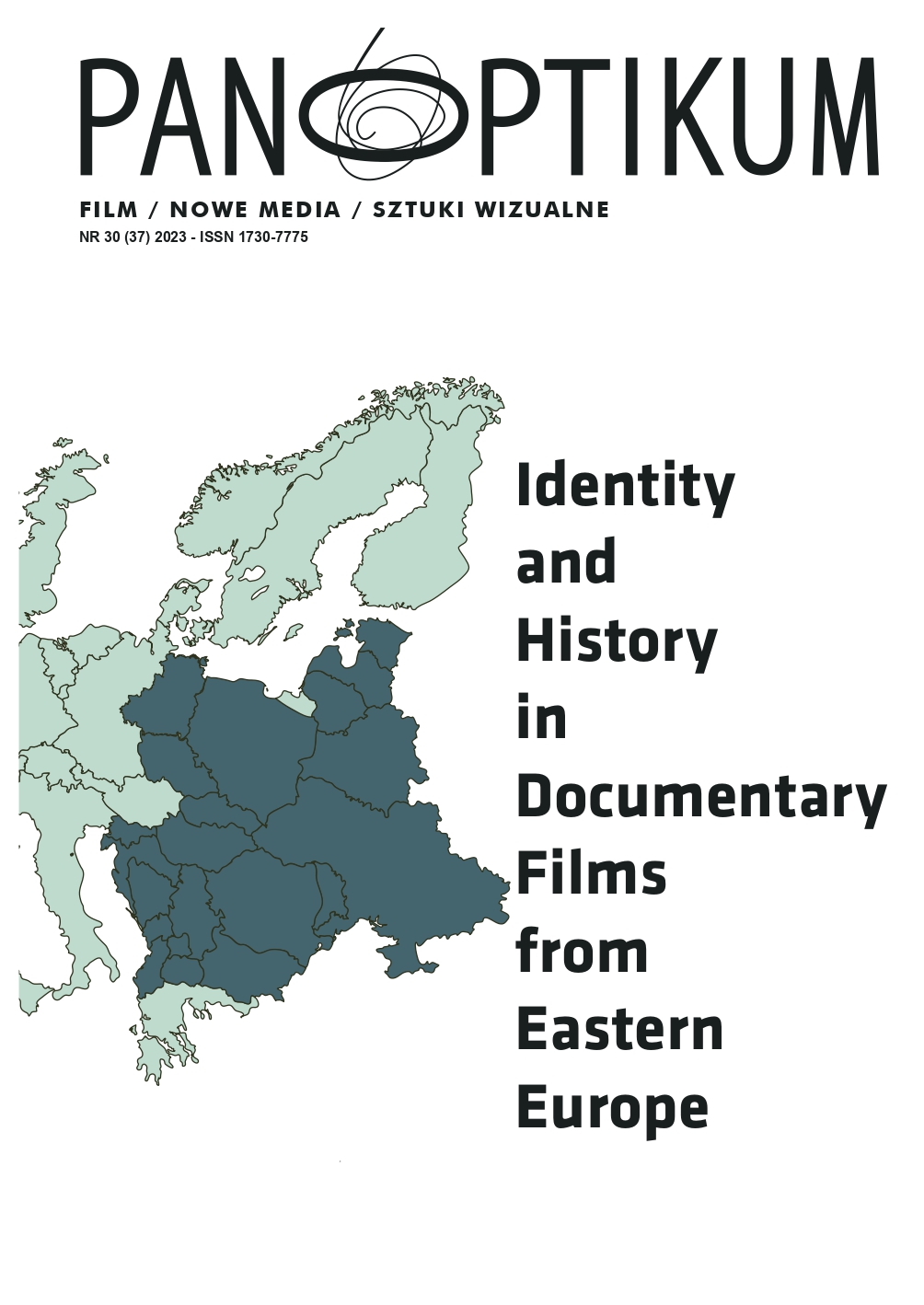Microhistories of the Crossroad Street films
DOI:
https://doi.org/10.26881/pan.2023.30.03Słowa kluczowe:
Microhistory, longitudinal documentary, Ivars Seleckis, revisitation, Latvian cinemaAbstrakt
Crossroad Street (Šķērsiela in Latvian) is an 800 m long street in the suburbs of the capital of Latvia – Riga. The street and its inhabitants have been documented in three films by Latvian director Ivars Seleckis over more than two decades. They represent microhistories of people’s lives, which reflect the political and socioeconomic situation in the country over more than two decades (the films were released between 1988 and 2013). The political transformations of the country’s present and past weave through individual destinies, reflecting the deportations of the 1940s, Soviet oppressive politics, the period of perestroika and the awakening of independence, as well as the consequences of joining the European Union, and transiting through the economic crisis in the first decade of the 2000s.
The article looks at the characters’ lives where the individual is in constant negotiation of the normative reality as described by Giovanni Levi, and explore their representation in the framework of longitudinal documentaries. Longitudinal documentaries involve revisitations – incorporation of the previously filmed material within a new film, which present an incremental form of narrative (Kilborn), where characters’ lives become “infra-ordinary” (Miller Skillander, Fowler).
With each subsequent film, Ivars Seleckis deepens the understanding of the complexity of everyday life in the country in a specific historic period, and presents a multi-layered narrative evolving at the specific location.
Downloads
Bibliografia
Baron, J. (2014). The Archive Effect. Found Footage and the Audiovisual Experience of History. London: Routledge.
Cowie, E. (2011). Recording Reality, Desiring the Real. Minneapolis, London: University of Minnesota Press.
Hongisto, I. (2017). Sweeping changes in Eastern Europe: The documentary frame in Gerd Kroske’s ‘Kehraus’ trilogy (1990-2006). “NECUS” 6 (1), Spring 2017, pp. 125-144. URL: https://necsus-ejms.org/sweeping-changes-eastern-europedocumentary-frame-gerdkroskes-kehraus-trilogy-1990-2006/.
Jasņecs, E. (1989). Kinorežisors un operators Ivars Seleckis: “Šis ir lūzuma mirklis manā režisora liktenī”. “Kino”, Nr. 5 (01.05.1989.)
Jēruma, I. (2009). Ivars un Maija. 100 gadi dokumentālajā kino. Rīga: Neputns.
Kilborn, R. (2010). Taking the Long View: A Study of Longitudinal Documentary. Manchester: Manchester University Press.
Levi, G. (1991). On microhistory, in: P. Burke (ed.) New Perspectives on Historical Writing. Cambridge: Polity Press: 97–119.
Mille, A. (1989). Tālis no Šķērsielas. “Liesma”. No. 3 (01.03.1989.)
Miller Skillander, K., Fowler, C. (2015). From longitudinal studies to longitudinal documentaries: revisiting infra-ordinary lives. “Studies in Documentary Film”. Vol. 9, Issue 2. https://doi.org/10.1080/17503280.2015.1031569.
Panse, S. (2008). Collective Subjectivity in The Children of Golzow vs. Alienation in ‘Western’ Interview Documentary. In: Austin, T., de Jong, W. (eds.), Rethinking Documentary. New Perspectives, New Practices. Maidenhead: Mc Graw Hill Open University Press.
Plantinga, C. R. (1997) Rhetoric and Representation in Nonfiction Film. Cambridge: Cambridge University Press.
Redovičs, A. (2021). “Artdocfest/Riga” un dokumentālistu pēcpusdienas snauda. “Kino Raksti”, 10.05.2021., https://www.kinoraksti.lv/petijumi/artdocfest-riga-undokumentalistu-pecpusdienas-snauda-805.
Skalbergs, A. (1993). “Mēs esam dzīvi un būsim brīvi”, Tālivaldis Margēvičs. “Treji Vārti”, Nr. 154 (01.07.1993.

 Uniwersyteckie Czasopisma Naukowe
Uniwersyteckie Czasopisma Naukowe









